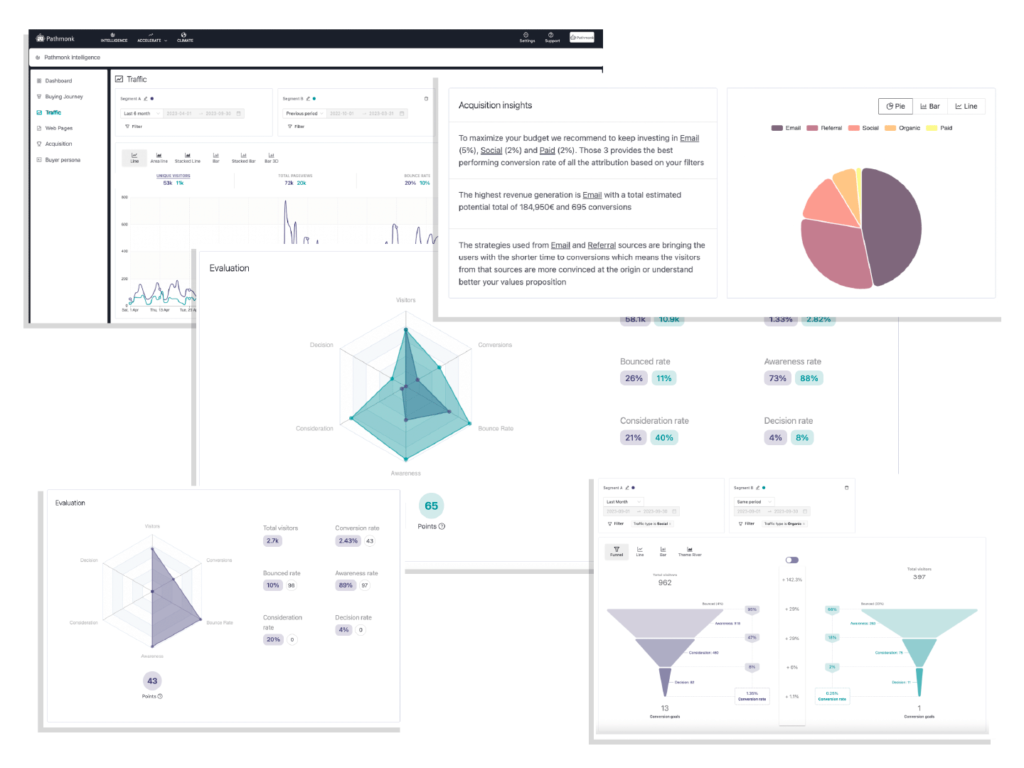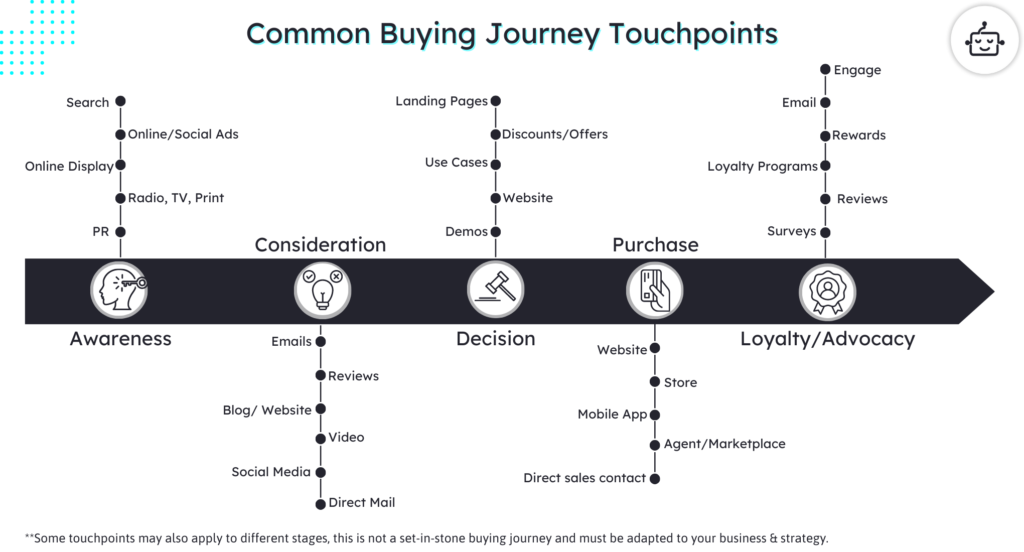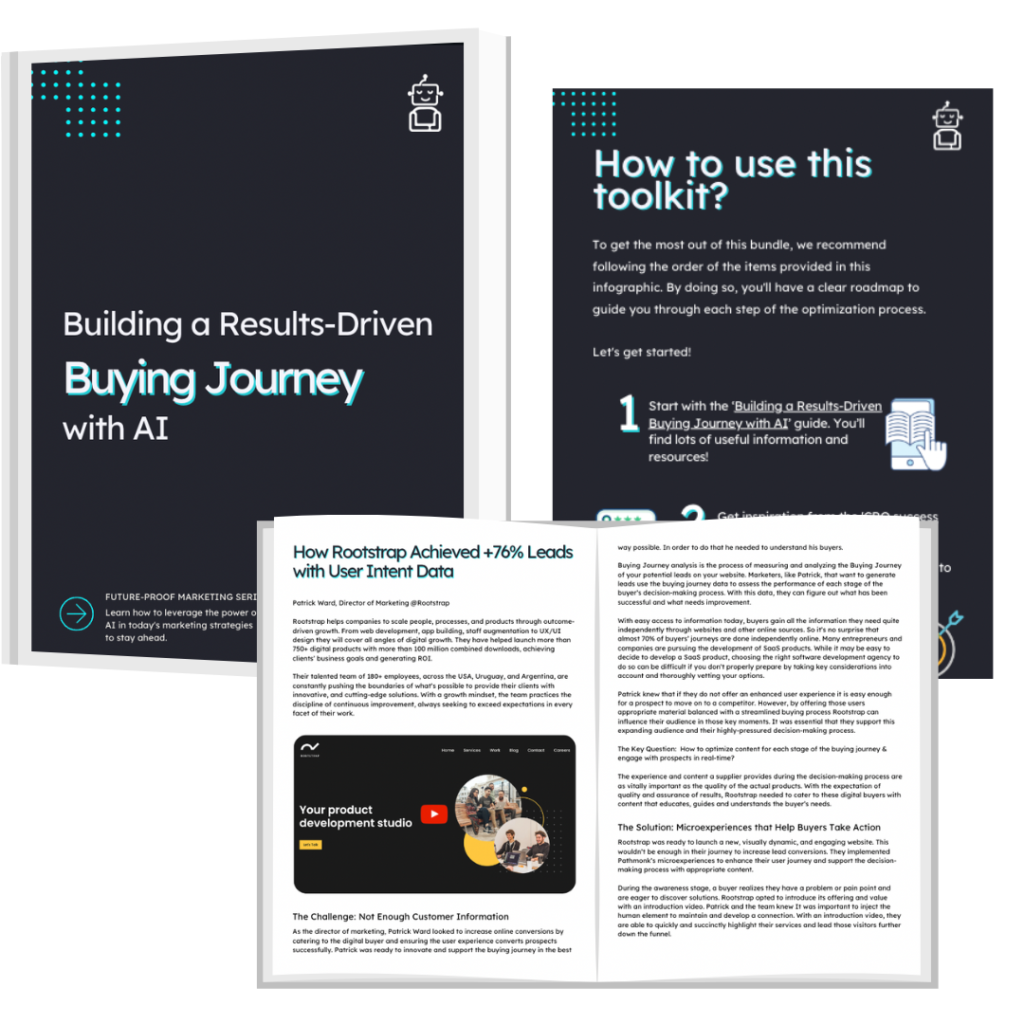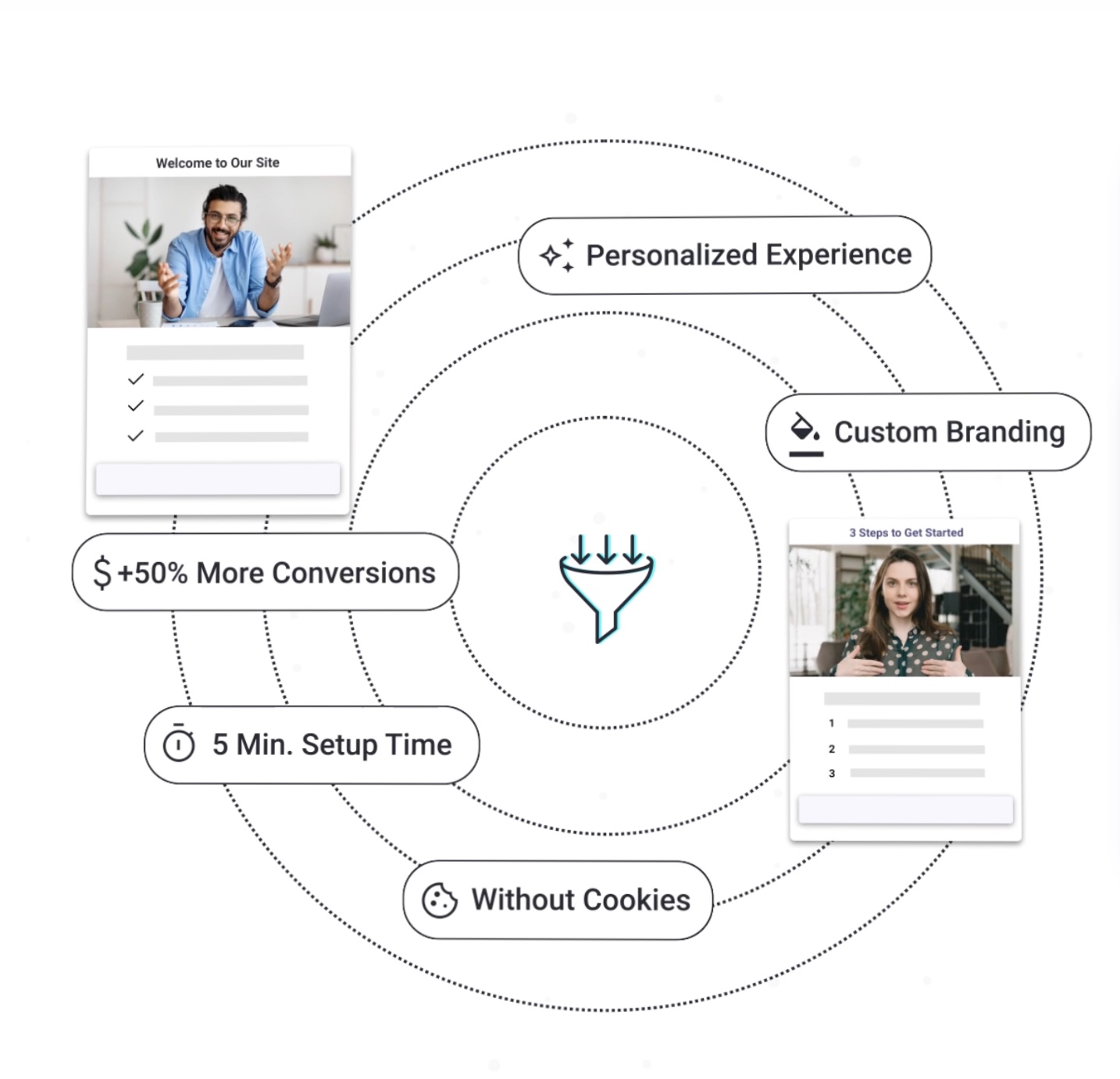A Step-by-Step Guide to Creating Your 2024 Marketing Plan


It’s time to start planning next year’s marketing plan, that moment that some marketers dread. The challenges facing marketers in 2024 are multifaceted. Consumer behavior is shifting, technology is advancing at breakneck speed, and the competition is fiercer than ever. In order to thrive in this environment, your marketing plan must not only be comprehensive but also nimble, capable of adjusting to the ever-changing landscape.
Crafting a successful marketing strategy for the upcoming year requires more than just a creative spark; it demands a structured and data-driven approach. In this guide, we will navigate the intricate steps of building a marketing plan that will not only meet the demands of 2024 but also drive your organization toward success.
Assessing Your Current State
Creating an effective marketing plan for the next year begins with a deep dive into your current marketing landscape. You will likely have some knowledge already of what we’re covering in this initial step, but it’s still essential to gather a comprehensive understanding of all these areas because they might have evolved over the past months.
Step 1: Evaluating the Previous Year's Marketing Efforts
To move forward successfully, it’s essential to look back. Begin by conducting a comprehensive evaluation of your marketing efforts from the previous year. Scrutinize every campaign, channel, and tactic used. Key aspects of this evaluation include:
- Performance Analysis: Dive into the data to understand what worked and what didn’t. Review key performance indicators (KPIs) such as conversion rates, click-through rates, and ROI for each campaign.
- Budget Review: Evaluate how well you used your marketing budget. Identify areas where you overspent or underspent and assess whether the allocation aligned with your goals.
- Content Review: Examine the content produced in the past year. Was it engaging, relevant, and aligned with your brand’s messaging? Did it resonate with your target audience?
- Feedback and Surveys: Collect feedback from customers and stakeholders to gain insights into their perceptions of your marketing efforts. Identify areas for improvement based on their comments and suggestions.
Step 2. Analyzing Your Audience and Market Trends
Understanding your audience is paramount in crafting a successful marketing plan. In 2024, consumer behavior continues to evolve rapidly, driven by technological advancements and shifting cultural norms. Here’s how to stay ahead:
- Audience Segmentation: Refine your understanding of your target audience by creating detailed buyer personas with the help of Pathmonk Intelligence and our template. Segment your audience based on demographics, psychographics, and behavior patterns.
- Market Trends: Stay attuned to market trends and emerging technologies. Conduct market research to identify new opportunities and potential threats. This knowledge will help you anticipate shifts in consumer preferences and adjust your strategies accordingly.
- Competitor Benchmarking: Analyze your competitors’ strategies and performance. Identify what sets them apart and where you can gain a competitive edge. Benchmarking can unveil untapped market opportunities.
Intuitive Cookieless Analytics for Your Web
Understand your customer journey, find drop-offs, and receive actionable insights with AI.

Step 3: Identifying Strengths, Weaknesses, Opportunities, and Threats (SWOT Analysis)
A SWOT analysis is a valuable tool to gain a holistic view of your current position. It allows you to identify internal strengths and weaknesses, as well as external opportunities and threats. Here’s how to conduct a SWOT analysis effectively:
- Strengths: Evaluate your organization’s internal advantages. What are you doing exceptionally well? This could be your talented team, unique products or services, strong brand reputation, or proprietary data.
- Weaknesses: Identify areas where your organization falls short. These could include resource constraints, outdated technology, or gaps in your marketing capabilities.
- Opportunities: Examine external factors that could positively impact your marketing efforts. This might involve emerging market trends, new platforms, or changing consumer behaviors that you can leverage.
- Threats: Consider external factors that pose potential risks to your marketing plan. These could include increased competition, economic fluctuations, or regulatory changes.
By conducting a comprehensive assessment of your current state, you’ll be well-equipped to make informed decisions as you progress through the marketing planning process. This groundwork will ensure that your strategies are aligned with your business’s realities and poised for success in the dynamic marketing landscape of 2024.
Defining Your Marketing Objectives
In the journey to creating a comprehensive marketing plan for 2024, setting clear and strategic objectives is the next crucial step. These objectives will serve as your guiding stars throughout the year, helping you stay on course and measure your progress effectively.
Step 4. Setting SMART Goals: Specific, Measurable, Achievable, Relevant, and Time-bound
- Specific: Your marketing objectives should be highly specific and well-defined. Rather than a vague goal like ‘increase website traffic’, aim for something more precise, such as ‘increase organic website traffic by 25%.’
- Measurable: Ensure that your objectives are quantifiable. This allows you to track progress and determine success. For example, if you want to boost social media engagement, you might set a goal to ‘increase average monthly likes and shares by 20%.’
- Achievable: While it’s important to aim high, your objectives should also be realistic. Consider your available resources, budget, and capabilities. Setting unattainable goals can lead to frustration and burnout.
- Relevant: Each objective should align with your overall marketing strategy and contribute to your company’s broader goals. Ensure that your marketing efforts are driving meaningful outcomes that matter to the business.
- Time-bound: Set clear deadlines for achieving your objectives. This helps create a sense of urgency and accountability. For instance, you might aim to ‘launch a new email marketing campaign by the end of Q1.’
Step 5: Aligning Objectives with Your Company's Overall Goals
Marketing objectives should never exist in isolation; they must harmonize with your organization’s overarching goals. Here’s how to ensure alignment:
- Company Vision and Mission: Start by revisiting your company’s vision and mission statements. Your marketing objectives should reflect the broader purpose and values of your organization.
- Strategic Alignment: Examine your company’s strategic plan for 2024. Identify the key initiatives and growth areas outlined in the plan. Your marketing objectives should directly support and align with these strategic priorities.
- Cross-Functional Collaboration: Engage with colleagues from other departments, such as sales, product development, and finance. Understand their goals and seek opportunities for synergy and collaboration. A unified approach across departments can lead to more impactful marketing objectives.
Step 6. Prioritizing Objectives Based on Their Impact
Not all marketing objectives are created equal, and it’s essential to prioritize them based on their potential impact on your business. Here’s how to make informed choices:
- Impact Assessment: Evaluate each objective’s potential impact on key performance indicators (KPIs), such as revenue, customer acquisition, or brand visibility. Consider which objectives have the most significant potential to drive results.
- Resource Allocation: Take stock of your available resources, including budget, manpower, and technology. Some objectives may require more resources than others. Prioritize objectives that align with your resource capacity.
- Risk Assessment: Consider the potential risks associated with each objective. High-risk objectives may offer high rewards, but they also come with greater uncertainty. Weigh the risk-reward ratio when prioritizing.
Marketing Budget Allocation
Budget allocation is a critical aspect of any marketing plan. It’s where strategy meets reality, and decisions made in this phase have a profound impact on the success of your marketing efforts. Here’s a detailed exploration of how to effectively allocate your marketing budget:
Step 7: Determining the Marketing Budget for Next Year
- Historical Data: Begin by examining your historical marketing budgets. Consider how much you allocated in previous years and the results you achieved. This provides a starting point for your 2024 budget.
- Revenue-Based Approach: Some organizations allocate a percentage of their annual revenue to marketing. This approach ensures that your budget scales with your business’s growth. Common benchmarks range from 5% to 15% of revenue, depending on the industry and growth stage.
- Goal-Based Budgeting: Align your budget with your marketing objectives. If you have ambitious growth goals, you may need to allocate a larger budget to support those objectives. Conversely, if you’re focused on maintaining market share, your budget may remain relatively stable.
- Competitive Analysis: Research what competitors in your industry are spending on marketing. While you shouldn’t blindly match their budgets, this information can provide insights into industry norms and benchmarks.
- Economic and Market Conditions: Consider external factors, such as economic conditions and market trends. Economic downturns may necessitate more cautious budgeting, while opportunities in a growing market may justify increased spending.
- Emerging Opportunities: Stay open to emerging marketing channels or technologies that could be cost-effective and yield high returns. Allocating a portion of your budget to experimentation can lead to breakthroughs.
Step 8: Allocating Resources Across Various Marketing Channels
- Channel Prioritization: Identify the most effective marketing channels for your business. This decision should align with your target audience’s preferences and your objectives. For example, if your audience is active on social media, allocate resources to social advertising.
- Multi-Channel Strategy: Diversify your budget across multiple channels to reduce risk. Consider a mix of online and offline channels, such as paid advertising, content marketing, email campaigns, social media, affiliation, and traditional marketing methods.
- Resource Allocation: Allocate resources based on channel performance data and historical ROI. Channels that consistently deliver a higher ROI should receive a proportionately larger share of your budget.
- Testing and Optimization: Reserve a portion of your budget for testing new channels or optimizing existing ones. Continuous experimentation allows you to adapt to changing consumer behavior and market dynamics.

Step 9: Calculating Return on Investment (ROI) Expectations
- Set Clear ROI Goals: Establish specific ROI goals for each marketing channel and campaign. Clearly define what success looks like in terms of revenue, customer acquisition, or other relevant KPIs.
- Attribution Modeling: Implement effective attribution modeling to track the impact of each marketing channel on conversions. Understand the customer journey and how different touchpoints contribute to ROI.
- Monitoring and Analysis: Continuously monitor the performance of your marketing campaigns in real time. Analyze data to identify what’s working and what’s not. Be prepared to adjust your allocation based on these insights.
- Long-Term vs. Short-Term ROI: Consider the balance between short-term and long-term ROI. Some marketing efforts, like brand-building initiatives, may not yield immediate returns but are essential for sustained growth.
- Budget Flexibility: Maintain flexibility in your budget to respond to changing ROI trends. If a particular channel is underperforming, reallocate resources to more promising opportunities.
Free AI-Powered Buying Journey Toolkit
Learn how to optimize your buying journey and speed up your revenue with top strategies and invaluable resources.

Crafting Your Marketing Mix
Your marketing mix is the combination of strategies and tactics you use to reach your target audience effectively. Crafting this mix requires careful consideration of various elements.
Step 10: Choosing the Right Marketing Channels
- Audience Alignment: Start by revisiting your buyer personas and market research. Ensure that your chosen marketing channels align with where your audience spends their time. Different demographics may prefer various channels.
- Channel Suitability: Consider the nature of your products or services. Some offerings may be better suited for visual platforms like Instagram or Pinterest, while others may thrive on professional networks like LinkedIn.
- Competitor Analysis: Analyze where your competitors are active. While you shouldn’t blindly follow their choices, understanding their channel selection can provide insights into effective platforms within your industry.
- Budget Considerations: Evaluate the budget required for each channel. Some channels, such as pay-per-click advertising, may have higher upfront costs, while others, like content marketing, may demand more ongoing resources.
- Diversification: Maintain a diversified presence across multiple channels to reduce risk. Relying too heavily on one channel can leave you vulnerable to fluctuations in its performance or changes in algorithms.
Step 11: Developing Your Content Strategy and Calendar
This step is about precision, consistency, and delivering value.
Your content strategy is more than just a collection of blog posts and social media updates; it’s a dynamic roadmap that guides your brand’s storytelling, educates your audience, and drives your marketing objectives. A well-structured content strategy paired with a thoughtfully planned calendar ensures that your message reaches the right audience at the right time, delivering maximum impact.
- Content Alignment: Ensure that your content aligns with your marketing objectives and the preferences of your target audience. Content should provide value, whether it educates, entertains, or solves a problem for your audience.
- Editorial Calendar: Create a well-defined editorial calendar that outlines the content topics, formats, and publication dates. A calendar helps maintain consistency and ensures that content supports your marketing objectives.
- Content Cadence: Determine the frequency of content publication. Balance consistency with quality; it’s better to publish high-quality content less frequently than to sacrifice quality for quantity.
- Content Amplification: Develop a strategy for amplifying your content through social media, email marketing, and other distribution channels. This ensures that your content reaches a wider audience.
- Measurement and Iteration: Implement tools to measure the performance of your content. Track metrics like engagement rates, click-through rates, and conversion rates. Use this data to refine your content strategy over time.
Step 12: Leveraging New Technologies and Automation
Technology and automation have become the unsung heroes of marketing, providing the tools and capabilities that can elevate your strategies to new heights of efficiency and effectiveness. Review the following:
- Marketing Technology Stack: Assess your existing marketing technology stack and identify any gaps or opportunities for improvement. Invest in tools that streamline your processes and enhance efficiency.
- Marketing Automation: Implement marketing automation to reduce manual tasks and improve personalization. Automation can help with email marketing, lead nurturing, and customer segmentation, among other tasks.
- Data Analytics: Leverage data analytics tools to gain deeper insights into customer behavior and campaign performance. Analyze data to identify trends, optimize strategies, and make data-driven decisions.
- Personalization: Use AI to deliver personalized experiences to your audience. Tailor content, product recommendations, and messaging to individual preferences and behavior with Pathmonk Accelerate. You can preview how it will work on your website with our Interactive demo.
More Sales From Your Website With AI
Personalized interactions based on your users' behaviour to get +50% more conversions.

Building Campaigns and Tactical Plans
This phase is all about transforming your strategic vision into tangible, action-oriented marketing campaigns and tactical plans.
Step 13: Creating Marketing Campaigns Aligned with Objectives
- Objective-Centric Approach: Every marketing campaign you create should be a strategic endeavor, purposefully designed to achieve one or more of your predefined marketing objectives (review step 4). Align the campaign’s goals with the broader mission of your marketing plan.
- Tactic Prioritization: In crafting your marketing plan, avoid a scattergun approach. Consider two vital factors—impact and resources—before diving into execution. You can create a matrix with these factors on the axis for better understanding. Always focus on tactics that promise significant results with minimal resource investment. This ensures efficient use of your assets and a strategic path to success.
- Message Consistency: Ensure that your campaign messaging is consistent with your brand’s voice and values. Cohesive messaging builds brand recognition and trust with your audience.
- Segmentation and Personalization: Tailor your campaigns to specific audience segments. Leverage the data gathered in Step 2 to create personalized content and offers that resonate with each segment.
Step 14: Setting Up Tracking and Reporting Mechanisms for Your Campaigns
- KPIs and Metrics: Define the key performance indicators (KPIs) and metrics that will measure the success of your campaigns. These could include conversion rates, click-through rates, engagement metrics, and revenue generated.
- Analytics Tools: Implement robust analytics and tracking tools to monitor campaign performance in real time. Platforms like Pathmonk Intelligence can provide valuable data about your campaign performance without using privacy-invasive cookies.
- Reporting Frequency: Determine how frequently you will generate campaign reports. Regular reporting ensures that you stay informed about your campaign’s progress and can make timely adjustments. Set up your custom reports on Pathmonk Intelligence and get your updated metrics with just one click.
- Data Integration: Integrate data from various sources to create a holistic view of campaign performance. Cross-channel insights can uncover valuable trends and opportunities.
By building well-defined campaigns that align with your objectives, setting clear timelines and milestones, and establishing robust tracking and reporting mechanisms, you’ll be poised for successful execution in your 2024 marketing plan. This phase bridges the gap between strategy and results, enabling you to measure the impact of your efforts and refine your approach for optimal performance.
Measuring ROI and Analytics
As the saying goes, ‘What gets measured gets managed’. You will not reach this phase until your campaigns are over, but it’s worth developing it here as you will have to include it in your marketing plan evaluation.
In this pivotal phase, the focus sharpens on quantifying the outcomes of your marketing efforts and harnessing the power of data-driven insights to steer your strategies toward greater success.
Step 15: Analyzing Campaign Performance Against KPIs
- KPI Assessment: Evaluate each campaign’s performance against the key performance indicators (KPIs) you set earlier in your plan. Analyze data such as conversion rates, click-through rates, engagement metrics, and more.
- Comparative Analysis: Compare campaign data with historical performance and industry benchmarks. Identify what worked exceptionally well and where improvements are needed.
- Segmentation Insights: Dive into data segmentation to understand how different audience segments responded to your campaigns. Tailor your strategies to better meet the needs of specific segments.
Step 16: Calculating Return on Investment
- ROI Calculation: Calculate the return on investment for each campaign by weighing the gains against the costs. Consider both direct revenue generated and the long-term value of acquired customers.
- Cost Analysis: Scrutinize the campaign expenses, including budget allocation and resource utilization. Identify areas where cost-efficiency can be improved.
- ROI Benchmarking: Benchmark your ROI against industry standards and competitor performance. This context provides valuable insights into your campaign’s success.
Reporting and Communication
In the final step of your 2024 marketing plan, we shift our focus to the crucial tasks of reporting and communication. This phase is where you bring together all your hard work, data, and insights to showcase the impact of your marketing efforts and foster a collaborative environment for future enhancements.
Step 17: Preparing Comprehensive Marketing Reports
- Data Compilation: Gather and compile data from various sources, including campaign performance metrics, ROI calculations, and customer feedback, as gathered in previous steps. Ensure accuracy and completeness in your data.
- Visual Representation: Create visually engaging reports that present data in a clear and understandable format. Use graphs, charts, and infographics to convey key insights effectively.
- Executive Summary: Include an executive summary at the beginning of your report to provide a concise overview of your marketing achievements and key findings.
Conclusion
Your marketing plan is more than just a document; it’s a living, breathing roadmap that will guide your marketing efforts throughout the year. With a solid foundation in place, you’re well-prepared to navigate the challenges and seize the opportunities that lie ahead.
Remember, marketing is not a one-time event but a continuous process of refinement and adaptation. As you implement your plan, be agile, monitor progress, and be open to change. Seek out new trends, technologies, and emerging strategies that can amplify your efforts.
Never underestimate the importance of communication and collaboration. Your ability to report on your achievements, share insights, and engage with stakeholders will be crucial in fostering a culture of innovation and success within your organization.
In the coming years, marketing will continue to be a dynamic and exciting field, driven by technological advancements, shifting consumer behaviors, and evolving industry trends. With your well-crafted marketing plan as your guide, you’re poised for a year of growth, impact, and achievement.
So, as you take the final steps in preparing your marketing plan, do so with confidence, knowing that you have the knowledge, strategies, and insights to make the most of the opportunities that await. Here’s to a year of marketing success and continued growth in 2024 and beyond.





